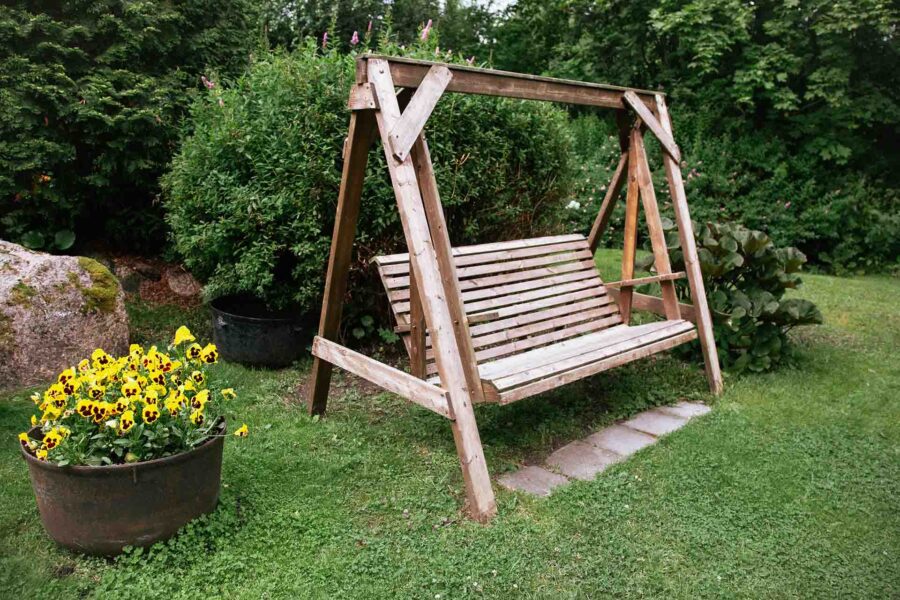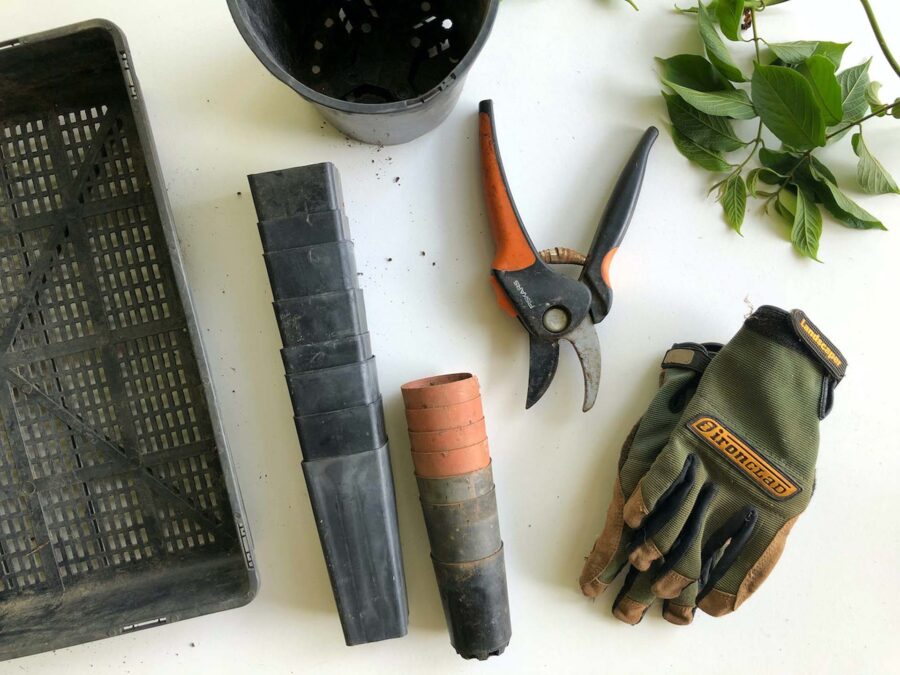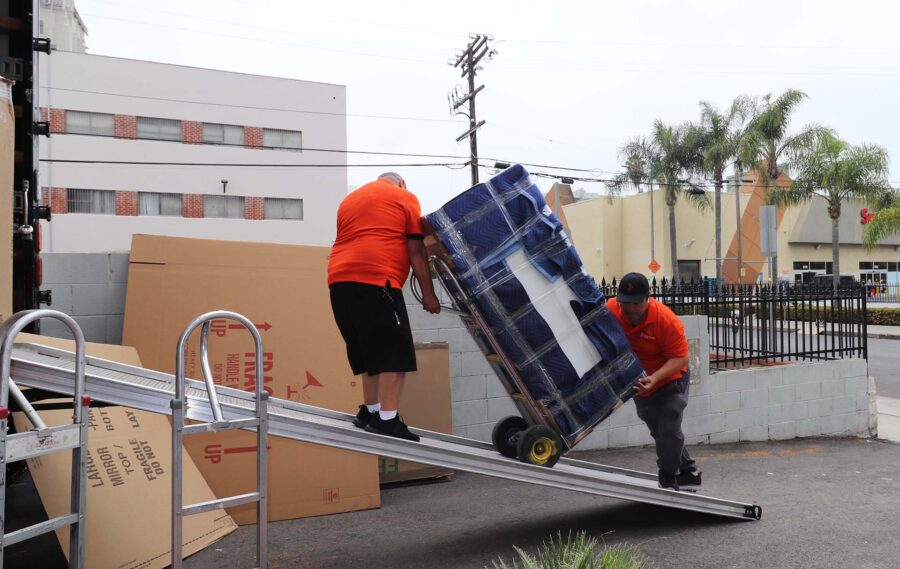

How to Pack Garden Furniture for Moving – A Guide by Cross Country Movers
Posted in How-to on September 10, 2024
Knowing how to pack garden furniture for moving is essential to protect your outdoor items once the time to move comes. Proper packing ensures that your belongings arrive at your new home without damage. In this guide, we’ll cover the best materials and methods to safely pack your garden furnishing, making your relocation as smooth as possible.
How to Pack Garden Furniture for Moving?
To pack garden furnishing for relocation to a new state, start by thoroughly cleaning each piece to remove dirt and debris. Disassemble any items that can be taken apart to save space and prevent damage during shipping in a relocation truck. Use protective covers or moving blankets to wrap each piece securely. For smaller accessories, use bubble wrap and pack them in sturdy relocation boxes.
Secure everything with tape and straps. Load the furniture strategically in the truck, placing heavier items at the bottom and lighter ones on top. This method ensures your garden furnishing remains protected and arrives at your new home in excellent condition.
Prepping Your Garden Furniture for Moving Across the Country
Shipping garden furnishing to a new city requires careful preparation to ensure it arrives in perfect condition. Begin by creating a detailed plan, which includes assessing the condition of each piece and determining the necessary packaging materials.
This preparation phase is crucial for a smooth transition and to avoid any last-minute hassles. Start early to allow ample time for each step, including cleaning, maintenance, and disassembly. Properly preparing your belongings not only makes the relocation easier but also extends the life of your outdoor items by preventing damage during transit.
Cleaning and Maintenance
Before packing for relocation, thoroughly clean each piece. Use a mild detergent and warm water to remove dirt, grime, and any buildup that might have accumulated over time. For metal and plastic furniture, a simple hose down followed by a wipe with a soft cloth is usually sufficient.
Wooden furnishing may require a gentle scrub with a soft brush and a wood-friendly cleaner. Cleaning your garden furniture ensures that no debris causes scratches or damage during shipping. Additionally, inspect each piece for any signs of wear and tear, and perform necessary maintenance, such as tightening screws or applying a protective sealant, to ensure everything is in optimal condition.
Disassembling Furniture, if Possible
Disassembling garden furnishing can significantly reduce the risk of damage and make it easier to pack and transport. Remove cushions, umbrellas, and any detachable parts like table legs or chair arms. Here’s a small relocation hack – keep screws, bolts, and other small components in labeled bags to avoid losing them during relocation to your future home.
Disassembling larger pieces, such as dining sets or loungers, not only saves space in the relocation truck but also allows for better protection of each individual part. If you’re not sure you’ll be able to reassemble everything after relocation, take photos or notes of the disassembly process so you can use them for reference.

Gathering the Necessary Packing Materials
To ensure your belongings are well-protected, gathering the right packing materials is essential. Proper materials not only safeguard your items from damage but also make the wrapping process more efficient. Here are the key materials you’ll need:
- Protective or plastic covers,
- Moving blankets,
- Bubble wrap,
- Packaging paper,
- Packing tape,
- Straps, bungee cords, and rope,
- Sturdy boxes,
- Labeling supplies (markers or labels).
Wrapping and Protecting Different Types of Outdoor Furnishings
Properly wrapping and protecting your outdoor furnishings is crucial to ensure they arrive at your new home undamaged. Each type of material requires specific care and attention. Understanding how to pack and protect upholstered, metal, wood, plastic, and wicker items can make packing efficient.
Cushioned and Upholstered Pieces
Cushioned and upholstered outdoor furnishing needs extra care to prevent tears and moisture damage. Start by removing the cushions and wrapping them in plastic or protective covers. This will keep them clean and dry during transport. For upholstered pieces, use moving blankets or bubble wrap to cover the entire item, securing it with tape. If the size of an item allows it, place it in a large, sturdy box for additional protection.
Metal and Wood Furniture
Metal and wooden pieces can be quite durable but still require proper wrapping to avoid scratches and dents. For metal furniture, apply a thin layer of wax or protective spray to prevent rust. Wrap each item with moving blankets, securing them with tape or straps. For wooden pieces, wrap the whole item or its disassembled components in blankets or bubble wrap. Pay special attention to corners and edges, using extra padding to prevent damage.
Plastic and Wicker Items
Plastic and wicker furnishing is lightweight but can be prone to breaking or cracking if not handled properly. Use bubble wrap to cover delicate parts and secure them with packing tape. For larger items, moving blankets can provide additional cushioning. Ensure all wrapped items are securely taped and, if possible, placed in sturdy boxes for transport.

Tips for Packing Garden Accessories
From handling delicate decorative pieces to packing tools, each task needs a careful approach and proper organization. Here are some essential relocation tips for packing your garden accessories efficiently and safely.
Protecting Umbrellas and Canopies
Umbrellas and canopies are often large and awkwardly shaped, making them challenging to pack. Disassemble any parts that can be taken apart, such as the pole from the umbrella. Roll up the fabric tightly and secure it with straps or bungee cords. Use protective covers or large plastic bags to keep them safe from dirt and moisture. For canopies, fold the fabric neatly and pack it in a sturdy box, ensuring it’s well-protected from sharp objects that might cause tears.
Securing Decorative Pieces
Garden decorations, such as statues, lanterns, and fountains, are fragile items that can be easily damaged. Wrap each piece individually in bubble wrap or packing paper, securing it with tape. Place smaller items in sturdy boxes, filling any gaps with foam peanuts or crumpled paper to prevent movement. For larger, heavier items, use moving blankets or foam padding for extra protection. Label each box as “Fragile” to ensure careful handling during the move.
Packing Gardening Tools and Equipment
Gardening tools and equipment can be bulky and sharp, posing a challenge when packing. Smaller hand tools should be wrapped in packing paper or bubble wrap and placed in a sturdy box. Secure the box with tape to prevent any tools from shifting.
Larger tools, such as rakes and shovels, can be bundled together and wrapped with moving blankets. Secure them with bungee cords or rope. For powered equipment, drain any fuel and oil to avoid leaks, and protect sharp edges with cardboard or plastic sheaths.

Efficient Loading Into the Relocation Truck
Efficiently loading your garden furniture and accessories into the relocation truck is crucial for a smooth move. Proper loading techniques ensure your items are moved safely and that you maximize the available space. By strategically placing and securing your furniture, you can prevent damage and make the unloading process easier. Of course, you can simply hire movers to load the truck. The movers at Cross Country Movers can handle this task effortlessly, thanks to their extensive experience.
Strategic Placement in the Truck
Start by loading the heaviest and largest pieces first, such as tables and metal furniture. Place these items against the walls of the truck to create a stable base. Next, load medium-sized pieces, like wooden chairs and benches, in the middle section. Fill gaps with smaller items and boxes, ensuring a snug fit to prevent shifting. Keep lighter and more delicate items, like cushions and decorative pieces, on top to avoid crushing.
Securing Furniture to Prevent Movement
To prevent movement during transit, it’s essential to secure your furniture properly. Use straps, bungee cords, or ropes to tie down larger items to the truck’s anchor points. This helps keep them in place and reduces the risk of damage. For added stability, use additional straps to secure items together, creating a tight, cohesive load that won’t shift during the move.
Making Use of Available Space
Maximizing the available space in the truck ensures all your belongings fit and reduces the need for multiple trips. Utilize vertical space by stacking lighter items on top of heavier ones, ensuring they are secure and won’t topple over. By effectively using all available space, you can streamline your move and protect your garden furniture and accessories.

Unpacking and Setting up Your Furniture at Your New Home
Once you’ve arrived at your new home, unpacking after relocation and setting up your garden furniture is the final step to enjoying your new outdoor space. Taking a systematic approach will make this process smoother and more efficient. There are two key tasks that await you – inspecting items for damage and reassembling everything.
Inspecting the Items for Any Damage
Before reassembling your furniture, inspect each piece for any damage that might have occurred during the move. Check for scratches, dents, or broken parts. Address any minor repairs immediately to prevent further damage. Document any significant issues for insurance claims – if you’ve hired a reliable moving company to ship your belongings, you likely have relocation insurance that can cover damages in part or fully.
Reassembling and Arranging Furniture
After inspection, start reassembling your furniture. Refer to any notes or photos you took during the disassembly to ensure everything is put back together correctly. Arrange your garden furniture in your desired layout, considering both functionality and aesthetics. Ensure that all pieces are stable and securely fastened. You’re now ready to enjoy your new outdoor space and the satisfaction of a successful move!

Don’t Want to Pack and Move on Your Own? Reach Out to Cross Country Movers
Moving cross-country can be a daunting and time-consuming task, especially when it comes to packing and transporting your belongings. If you don’t want to tackle this challenge alone, reach out to Cross Country Movers. Our team of professional long-distance movers offers expert cross-country moving services, ensuring your items are packed and moved safely to your new home.
We handle everything from disassembling furniture and packing assistance to unloading at your new doorstep, giving you peace of mind during relocation. Contact us today for a stress-free long-distance moving experience, and let us make your move as seamless as possible.




